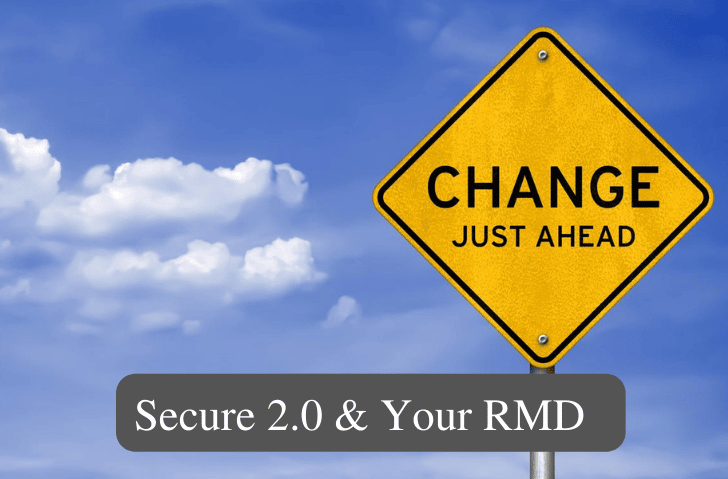The Secure Act 2.0 was signed into law on December 29, 2022 bringing some major changes when it comes to retirement planning. Among the most notable is a change to Required Minimum Distributions (RMD). The new law builds on earlier legislation that allows retirees to delay required minimum distributions (RMDs) until a later age. This can be a significant benefit for retirees who don’t need the income from their retirement accounts and want to keep their savings invested for as long as possible.
Under current laws, retirees are generally required to begin taking RMDs from their traditional IRA and 401(k) accounts at age 72 (70.5 if they turned 70.5 before January 1, 2020). RMDs are calculated as a percentage of the account balance, and the percentage increases as the retiree gets older.
The Secure Act 2.0 increases the RMD age gradually from 72 to 75 years old. This means that retirees can now delay taking RMDs from their tax-deferred retirement accounts.
Starting in 2023 the age which an owner of a retirement account must begin taking RMD’s will increase to 73 (Beginning on January 1st, 2023). The current age to begin taking RMDs is 72, so individuals will have an additional year to delay taking a mandatory withdraw of deferred savings from their retirement accounts. BEWARE: If you turned 72 in 2022 or earlier, you would need to continue taking your RMD. If you didn’t, you can push out your withdraws another year.
Additionally, the new legislation also pushes out the age for RMD’s to 75 starting in 2033.
For retirees who don’t need the income from their retirement accounts, delaying RMDs can be a smart financial strategy. By keeping their savings invested, they may be able to generate higher returns and increase the size of their nest egg. This can be especially beneficial for retirees who want to leave a legacy for their heirs or plan to need more savings in the future.
If you have additional questions, especially on how to maximize this change in order to transition into tax-free retirement income, make sure to contact us for answers. You can also review this video if you are looking for ways to minimize or get around your RMD.

